The Peanut Butter market is expected to grow from USD 5.71 billion in 2022 to USD 11.02 Billion by 2032, at a CAGR of 6.80% during the forecast period 2023-2032.
Peanut butter is a food paste or spread made from ground, dry-roasted peanuts. It contains additional ingredients that modify the taste or texture, like sweeteners, salt, or emulsifiers. Consumed in many countries, it is the most used nut butter. This group also includes cashew butter and almond butter. Though peanuts are not wild, peanut butter is considered nut butter.
The driving factors of the market growth are the increasing trend of health consciousness and rising demand for high-protein food products among youth and millennials drive the global demand for peanut butter. Similarly, new opportunities for the peanut butter business will emerge as consumers become more anxious about their health due to increasing chronic conditions like high blood pressure and heart disease. Transforming lifestyles with a high preference for convenient food also promotes the growth of the global market.
This study delivers a comprehensive analysis of type, distribution channel, and region. The type segment includes creamy, crunchy, and other. The crunchy segment holds the largest market share in 2022 due to Crunchy peanut butter tends to be slightly healthier as it has less saturated fats and more fibre than creamy. Over the projection period, crunchy peanut butter types are predicted to flourish due to their growing popularity among kids and youth. The distribution channel segment includes offline, and online. The offline segment holds the largest market share in 2022 due to the higher market share of the offline segment is due to its long-established nature and overall availability globally. Similarly, most customers still choose shopping at offline distribution channels as it presents product verification, authenticity, and surety.
The market has been divided into North America, Europe, Asia-Pacific, Middle East & Africa, and South America. North America holds the largest market share due to higher peanut butter consumption in the United States. As per National Peanut Board, 95% of U.S. households consume peanut butter regularly, one of the most popular flavours in America. More increased peanut production, growing companies, and higher awareness about the product in North America are due to higher market share.
Some of the notable players in the market are Conagra Brands, Inc., Hormel Foods Corporation, J.M. Smucker Company, Kellogg Company, Kraft Foods, and Mars, Inc.
Report Description:
1. Introduction
1.1. Objectives of the Study
1.2. Market Definition
1.3. Research Scope
1.4. Currency
1.5. Key Target Audience
2. Research Methodology and Assumptions
3. Executive Summary
4. Premium Insights
4.1. Porter’s Five Forces Analysis
4.2. Value Chain Analysis
4.3. Top Investment Pockets
4.3.1. Market Attractiveness Analysis by Type
4.3.2. Market Attractiveness Analysis by Distribution Channel
4.3.3. Market Attractiveness Analysis by Region
4.4. Industry Trends
5. Market Dynamics
5.1. Market Evaluation
5.2. Drivers
5.2.1. Increasing health awareness across the globe.
5.3. Restraints
5.3.1. High Price
5.4. Opportunities
5.4.1. Consumers become more worried about their health.
6. Global Peanut Butter Market Analysis and Forecast, By Type:
6.1. Segment Overview
6.2. Creamy
6.3. Crunchy
6.4. Others
7. Global Peanut Butter Market Analysis and Forecast, By Distribution Channel
7.1. Segment Overview
7.2. Offline
7.3. Online
8. Global Peanut Butter Market Analysis and Forecast, By Regional Analysis
8.1. Segment Overview
8.2. North America
8.2.1. U.S.
8.2.2. Canada
8.2.3. Mexico
8.3. Europe
8.3.1. Germany
8.3.2. France
8.3.3. U.K.
8.3.4. Italy
8.3.5. Spain
8.4. Asia-Pacific
8.4.1. Japan
8.4.2. China
8.4.3. India
8.5. South America
8.5.1. Brazil
8.6. Middle East and Africa
8.6.1. UAE
8.6.2. South Africa
9. Global Peanut Butter Market-Competitive Landscape
9.1. Overview
9.2. Market Share of Key Players in the Peanut Butter Market
9.2.1. Global Company Market Share
9.2.2. North America Company Market Share
9.2.3. Europe Company Market Share
9.2.4. APAC Company Market Share
9.3. Competitive Situations and Trends
9.3.1. Product Launches and Developments
9.3.2. Partnerships, Collaborations, and Agreements
9.3.3. Mergers & Acquisitions
9.3.4. Expansions
10. Company Profiles
10.1. Conagra Brands, Inc.
10.1.1. Business Overview
10.1.2. Company Snapshot
10.1.3. Company Market Share Analysis
10.1.4. Company Product Portfolio
10.1.5. Recent Developments
10.1.6. SWOT Analysis
10.2. Hormel Foods Corporation.
10.2.1. Business Overview
10.2.2. Company Snapshot
10.2.3. Company Market Share Analysis
10.2.4. Company Product Portfolio
10.2.5. Recent Developments
10.2.6. SWOT Analysis
10.3. J.M. Smucker Company.
10.3.1. Business Overview
10.3.2. Company Snapshot
10.3.3. Company Market Share Analysis
10.3.4. Company Product Portfolio
10.3.5. Recent Developments
10.3.6. SWOT Analysis
10.4. Kellogg Company
10.4.1. Business Overview
10.4.2. Company Snapshot
10.4.3. Company Market Share Analysis
10.4.4. Company Product Portfolio
10.4.5. Recent Developments
10.4.6. SWOT Analysis
10.5. Kraft Foods.
10.5.1. Business Overview
10.5.2. Company Snapshot
10.5.3. Company Market Share Analysis
10.5.4. Company Product Portfolio
10.5.5. Recent Developments
10.5.6. SWOT Analysis
10.6. Mars, Inc.
10.6.1. Business Overview
10.6.2. Company Snapshot
10.6.3. Company Market Share Analysis
10.6.4. Company Product Portfolio
10.6.5. Recent Developments
10.6.6. SWOT Analysis
List of Table
1. Global Peanut Butter Market, By Type, 2019-2032 (USD Billion)
2. Global Creamy Peanut Butter Market, By Region, 2019-2032 (USD Billion)
3. Global Crunchy Peanut Butter Market, By Region, 2019-2032 (USD Billion)
4. Global Other Peanut Butter Market, By Region, 2019-2032 (USD Billion)
5. Global Peanut Butter Market, By Distribution Channel, 2019-2032 (USD Billion)
6. Global Offline Peanut Butter Market, By Region, 2019-2032 (USD Billion)
7. Global Online Peanut Butter Market, By Region, 2019-2032 (USD Billion)
8. North America Peanut Butter Market, By Type, 2019-2032 (USD Billion)
9. North America Peanut Butter Market, By Distribution Channel, 2019-2032 (USD Billion)
10. U.S. Peanut Butter Market, By Type, 2019-2032 (USD Billion)
11. U.S. Peanut Butter Market, By Distribution Channel, 2019-2032 (USD Billion)
12. Canada Peanut Butter Market, By Type, 2019-2032 (USD Billion)
13. Canada Peanut Butter Market, By Distribution Channel, 2019-2032 (USD Billion)
14. Mexico Peanut Butter Market, By Type, 2019-2032 (USD Billion)
15. Mexico Peanut Butter Market, By Distribution Channel, 2019-2032 (USD Billion)
16. Europe Peanut Butter Market, By Type, 2019-2032 (USD Billion)
17. Europe Peanut Butter Market, By Distribution Channel, 2019-2032 (USD Billion)
18. Germany Peanut Butter Market, By Type, 2019-2032 (USD Billion)
19. Germany Peanut Butter Market, By Distribution Channel, 2019-2032 (USD Billion)
20. France Peanut Butter Market, By Type 2019-2032 (USD Billion)
21. France Peanut Butter Market, By Distribution Channel, 2019-2032 (USD Billion)
22. U.K. Peanut Butter Market, By Type, 2019-2032 (USD Billion)
23. U.K. Peanut Butter Market, By Distribution Channel, 2019-2032 (USD Billion)
24. Italy Peanut Butter Market, By Type, 2019-2032 (USD Billion)
25. Italy Peanut Butter Market, By Distribution Channel, 2019-2032 (USD Billion)
26. Spain Peanut Butter Market, By Type, 2019-2032 (USD Billion)
27. Spain Peanut Butter Market, By Distribution Channel, 2019-2032 (USD Billion)
28. Asia Pacific Peanut Butter Market, By Type, 2019-2032 (USD Billion)
29. Asia Pacific Peanut Butter Market, By Distribution Channel, 2019-2032 (USD Billion)
30. Japan Peanut Butter Market, By Type, 2019-2032 (USD Billion)
31. Japan Peanut Butter Market, By Distribution Channel, 2019-2032 (USD Billion)
32. China Peanut Butter Market, By Type 2019-2032 (USD Billion)
33. China Peanut Butter Market, By Distribution Channel, 2019-2032 (USD Billion)
34. India Peanut Butter Market, By Type 2019-2032 (USD Billion)
35. India Peanut Butter Market, By Distribution Channel, 2019-2032 (USD Billion)
36. South America Peanut Butter Market, By Type, 2019-2032 (USD Billion)
37. South America Peanut Butter Market, By Distribution Channel, 2019-2032 (USD Billion)
38. Brazil Peanut Butter Market, By Type 2019-2032 (USD Billion)
39. Brazil Peanut Butter Market, By Distribution Channel, 2019-2032 (USD Billion)
40. Middle East and Africa Peanut Butter Market, By Type, 2019-2032 (USD Billion)
41. Middle East and Africa Peanut Butter Market, By Distribution Channel, 2019-2032 (USD Billion)
42. UAE Peanut Butter Market, By Type, 2019-2032 (USD Billion)
43. UAE Peanut Butter Market, By Distribution Channel, 2019-2032 (USD Billion)
44. South Africa Peanut Butter Market, By Type 2019-2032 (USD Billion)
45. South Africa Peanut Butter Market, By Distribution Channel, 2019-2032 (USD Billion)
List of Figures
1. Global Peanut Butter Market Segmentation
2. Peanut Butter Market: Research Methodology
3. Market Size Estimation Methodology: Bottom-Up Approach
4. Market Size Estimation Methodology: Top-Down Approach
5. Data Triangulation
6. Porter’s Five Forces Analysis
7. Value Chain Analysis
8. Global Peanut Butter Market Attractiveness Analysis by Type
9. Global Peanut Butter Market Attractiveness Analysis by Distribution Channel
10. Global Peanut Butter Market Attractiveness Analysis by Region
11. Global Peanut Butter Market: Dynamics
12. Global Peanut Butter Market Share by Type (2022 & 2032)
13. Global Peanut Butter Market Share by Distribution Channel (2022 & 2032)
14. Global Peanut Butter Market Share by Regions (2022 & 2032)
15. Global Peanut Butter Market Share by Company (2022)
Market research is a method of gathering, assessing and deducing data & information about a particular market. Market research is very crucial in these days. The techniques analyze about how a product/service can be offered to the market to its end-customers, observe the impact of that product/service based on the past customer experiences, and cater their needs and demands. Owing to the successful business ventures, accurate, relevant and thorough information is the base for all the organizations because market research report/study offers specific market related data & information about the industry growth prospects, perspective of the existing customers, and the overall market scenario prevailed in past, ongoing present and developing future. It allows the stakeholders and investors to determine the probability of a business before committing substantial resources to the venture. Market research helps in solving the marketing issues challenges that a business will most likely face.
Market research is valuable because of the following reasons:
Our research report features both the aspects; qualitative and quantitative. Qualitative part provides insights about the market driving forces, potential opportunities, customer’s demands and requirement which in turn help the companies to come up with new strategies in order to survive in the long run competition. The quantitative segment offers the most credible information related to the industry. Based on the data gathering, we use to derive the market size and estimate their future growth prospects on the basis of global, region and country.
Our market research process involves with the four specific stages.

Data Collection: This stage of the market research process involves with the gathering and collecting of the market/industry related data from the sources. There are basically two types of research methods:
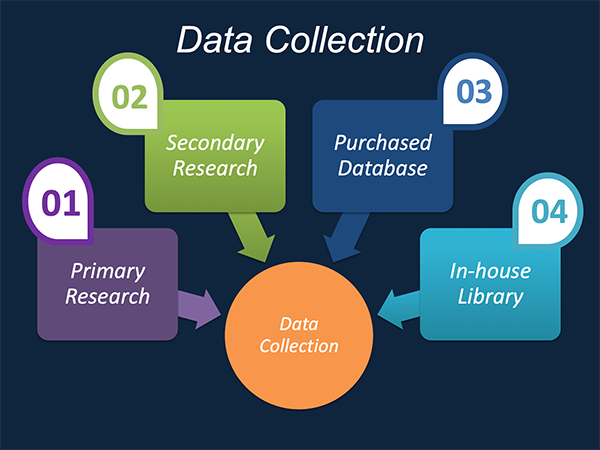
Data Synthesis: This stage includes the evaluation and assessment of all the data acquired from the primary and secondary research. It likewise includes in evaluating the information for any disparity watched while information gathering identified with the market. The data & information is gathered with consideration to the heterogeneity of sources. Scientific and statistical methods are implemented for synthesizing dissimilar information sets and provide the relevant data which is fundamental for formulating strategies. Our organization has broad involvement with information amalgamation where the information goes through different stages:


Market Formulation & Deduction: The last stage includes assigning the data & information in a suitable way in order to derive market size. Analyst reviews and domain based opinions based on holistic approach of market estimation combined with industry investigation additionally features a crucial role in this stage.
This stage includes with the finalization of the market size and numbers that we have gathered from primary and secondary research. With the data & information addition, we ensure that there is no gap in the market information. Market trend analysis is finished by our analysts by utilizing data extrapolation procedures, which give the most ideal figures to the market.
Data Validation: Validation is the most crucial step in the process. Validation & re-validation through scientifically designed technique and process that helps us finalize data-points to be used for final calculations. This stage also involves with the data triangulation process. Data triangulation generally implicates the cross validation and matching the data which has been collected from primary and secondary research methods.





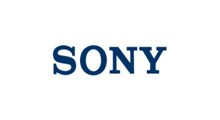

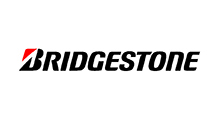

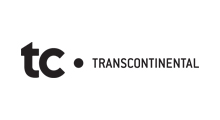















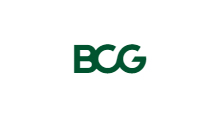


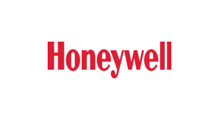

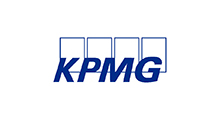




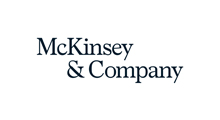

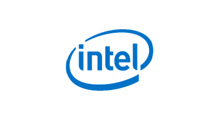







Free Customization
Countries can be added on demand
Free yearly update on purchase of Multi/Corporate User License
Companies served till date

We serve our customers 24x7 for 365 days through calls, emails and live chat options.

Huge database of exceptional market reports bringing market intelligence to your fingertips.

SSL enabled, we offer you various secured payment options for risk free purchase.